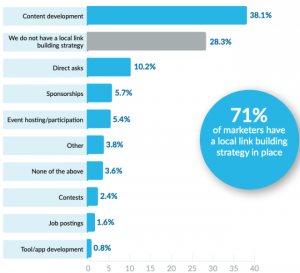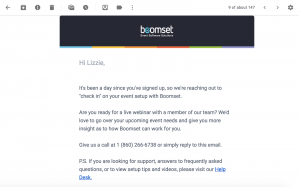
Pay per click marketing is a valuable tool to have in your advertising arsenal. By displaying PPC ads of your business on mobile devices and desktops, you have the ability to target consumers wherever they go. Consumers will see your ad, and hopefully click on it. While clicks cost money, they’re an investment that will — if done successfully — pay off with a conversion or a sale.
If you’ve been on the fence about dipping your toes into PPC, here are seven ways to tell if it’s the right fit for your company.
1. Do You Want to Control Your Budget?
Depending on your needs, advertising can be anywhere from relatively inexpensive to potentially pricey. Lucky for you, with PPC, you’re in control of your budget.
With PPC, you bid the amount you’re willing to pay for a click. The highest bidder has the best chance of their ad being ranked highest. According to Powertraffick.com – 46% of clicks go to the top three paid advertising spots.
Once your ad is set up, you are able to set a budget for what you’re prepared to spend on a daily, weekly, or monthly basis. Once that cap is reached, you won’t see any more ads until your budget resets, or you choose to increase the budget.
Let’s say a travel customer searches for airline tickets. They see your ad, click on it, and go to the landing page. With paid advertising, you pay every time someone clicks your ad and travels to your landing page, so you’ll have tight control over the amount of traffic you receive, and your budget.

2. Do You Need to Target Specific Criteria?
Pay per click advertising allows you to specifically target certain customers by demographics, as well as choose where and when the ad is shown. For instance, you can:
- Target by using keywords so that your ads will show up in keyword searches.
- Geotarget the right locations your prospects visit. 69% of Google searches include specific locations.
- Choose which devices your ads appear on. Now that nearly everyone uses a data-streaming mobile device, be sure to target mobile devices along with desktop.
- Schedule your ads to display during prime traffic. This is called dayparting.
- Change the language used depending on the season. Your ads might look different and get a better response during the holidays if they have a holiday-friendly theme to them.

Source:Premier Marketing Group
3. Are You Looking for Measurable Results?
Sorting your data by date range and metrics allows you to see how your campaigns are performing. Some key metrics you’ll want to analyze include:
- Impressions. The number of impressions is dependent on how many times the ad was loaded onto the webpage. Compare this with the number of clicks your ad receives.
- Clicks. The count of how many times a person actually clicks on one of your search or display ads. Take note of any daily fluctuations and trends.
- Click-Through Rate (CTR). The rate at which your ads are clicked. The formula looks like this: (Total Clicks on Ad) / (Total Impressions) = Click-Through Rate.
- Conversions. The desired action you were hoping for. Things like subscribing to a mailing list, making a purchase, etc. are all considered conversions.
With measurable results, you can efficiently view all aspects of your campaign as needed. And if you’re using platforms like Google AdWords or Bing Ads, then analyzing the performance of your PPC campaign will be fairly straightforward.
4. Do You Want Instant Exposure?
Using paid advertising, your ads will immediately be exposed on websites and searches. So as soon as the ads go out, they are seen and should start generating traffic.
Since you’re paying to have your ads displayed, the chance of getting – at least impressions – is higher than waiting for organic traffic results.
The difference in waiting for organic traffic (using SEO) instead of PPC, is that you’re not paying to achieve a higher rank. You achieve higher rankings on a search engine results page (SERP) naturally by putting more work into your campaign.
To rank higher organically, you’ll have to do extensive keyword research, build backlinks, and create valuable content, all of which require time and manpower.
And even after all of that, it’s still a waiting game.
If your organic results aren’t on the first page of search results, your chances of getting clicks are very low. Only 8.5% of searchers will go past the first page, so you’ll need to spend time optimizing your website to rank better. This isn’t an overnight process and takes time.
PPC allows you to circumvent this process. You’re paying to appear in the paid advertising space, which appears above the organic listings, saving yourself time and manpower.

5. Is Building Brand Recognition a Priority?
Targeted keywords help you show up in relevant searches, and every time someone sees your PPC ad in their search, you’re establishing brand recognition. Building brand awareness is the first step in the sales funnel.
 Source: Inside AdWords
Source: Inside AdWords
And brand recognition not only can be achieved through search, but social media, too.
Facebook uses cost per click for their ads, as does Twitter. Plus, when someone engages with your ad, there’s a chance their followers can see that too, which can potentially grow your following based on theirs.
6. Do You Need to Test Multiple Campaigns?
PPC advertising is good for testing out multiple ads at the same time. If you run more than one ad at a time, for the same period of time, you can review the analytics and see which ad performed better, otherwise known as A/B testing.
By running A/B testing on ads, you won’t be wasting money on ads that don’t perform well. For instance, one website saw a 7.5% increase in conversions when they added a background image to the PPC landing page instead of the background being blank. Running a test like this lets you find out exactly what works, and ditch what doesn’t.
7. Do You Want to Control What Your Prospects See?
Ads with successful landing pages see higher conversions rates than those that don’t. Using a homepage as the landing page does not typically convert well, so tailor your landing page to the specific offer. When you send the prospect directly to the offer, make it as easy as possible for them to convert.

National Geographic Magazine found this to be true. Their objective was to see a higher subscription rate in the UK. They created specific landing pages tailored to locations to attract the interest of the prospects, boosting their subscription rate by 193% in four years.
Landing pages make it simple for the consumer, and easier for you to get the conversion.
Conclusion
Before you dive right in, remember PPC isn’t “set it and forget it.” It takes work and you’ll need to make sure you can answer these seven questions if you’re considering PPC. Keep tabs on your analytics, and as you introduce new products, services, or language, remember to adapt your PPC campaigns to this and your consumers changing buying habits, and hopefully, you’ll reap the rewards.
Digital & Social Articles on Business 2 Community(42)







